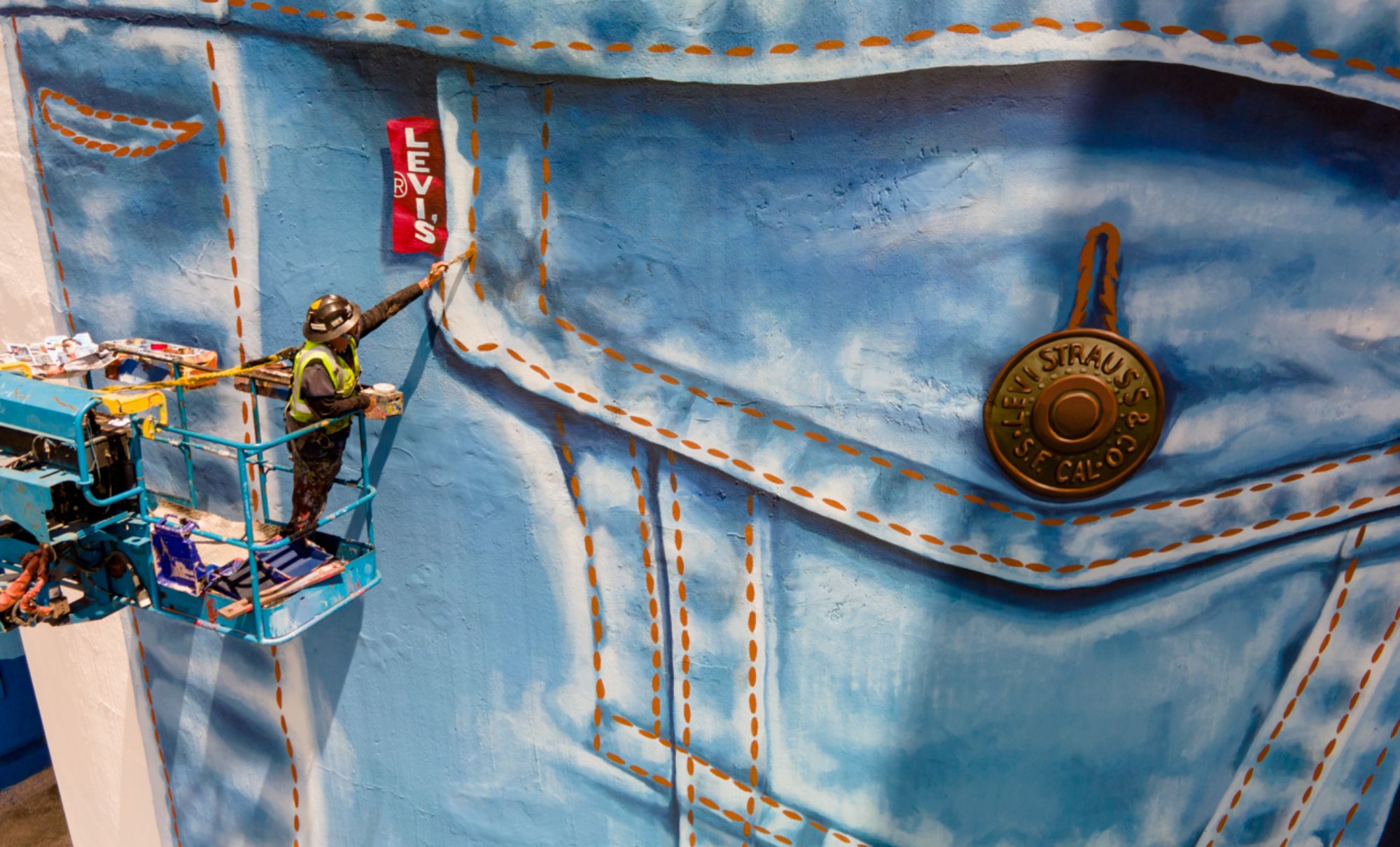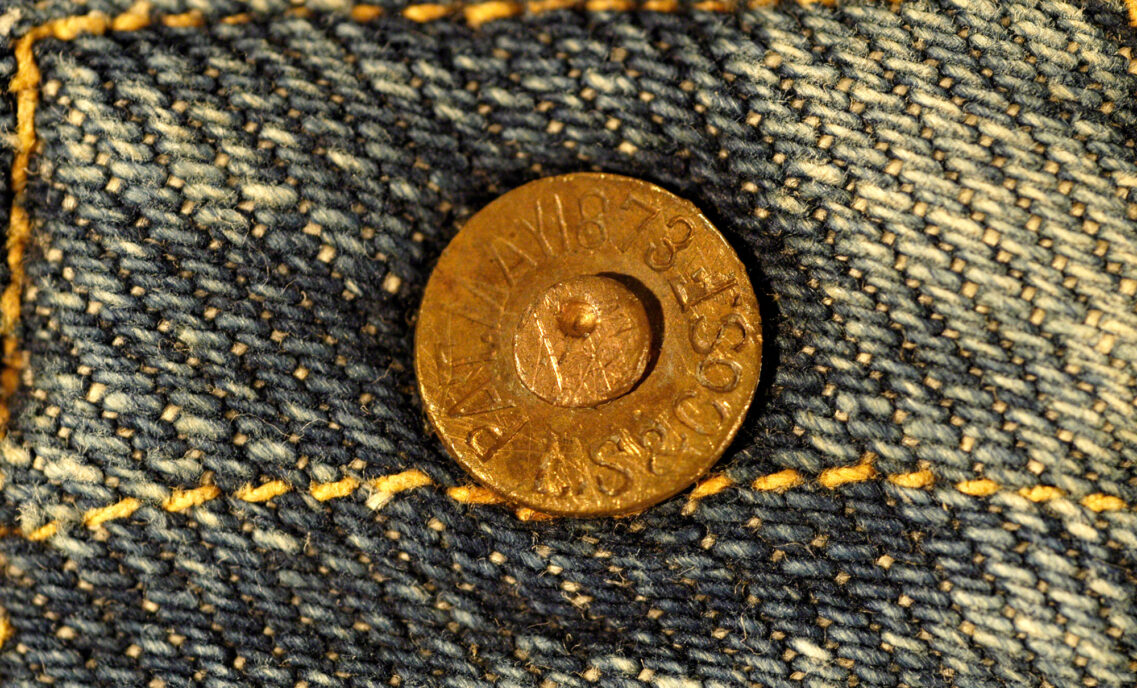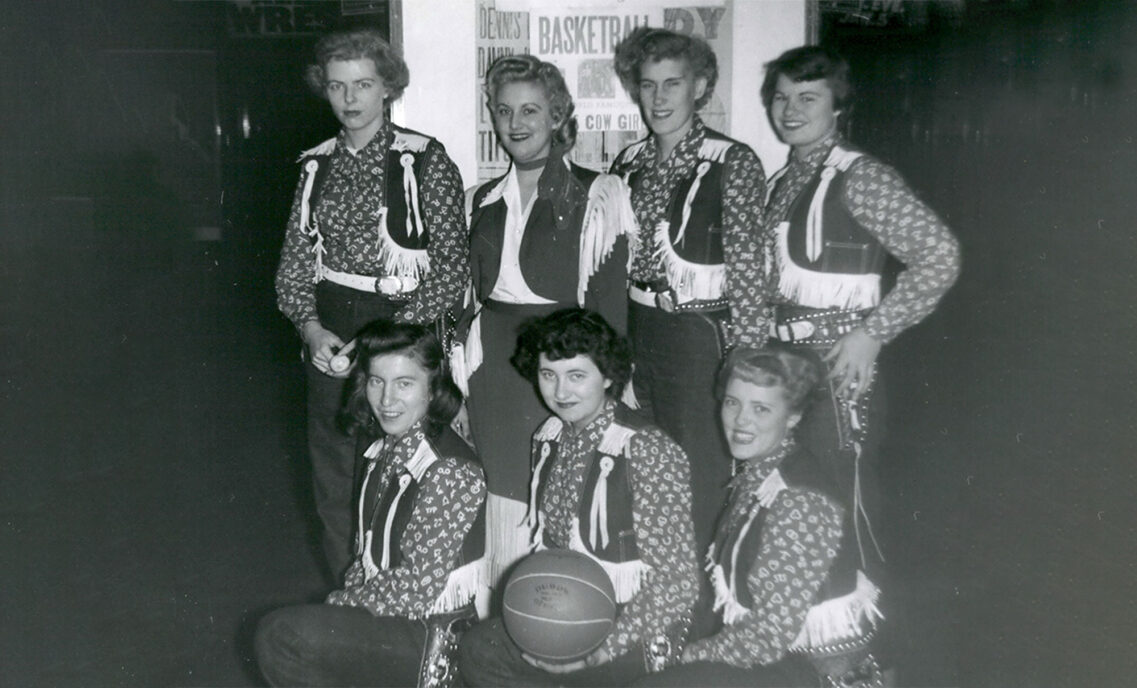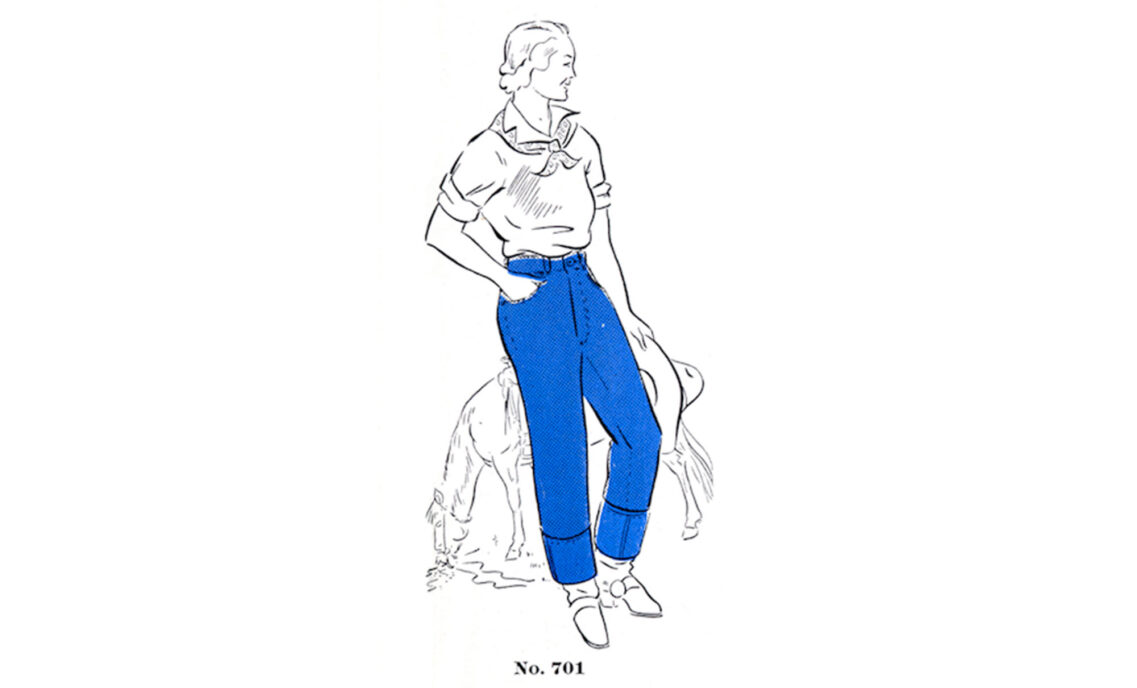A four-foot-wide button. A two-and-a-half foot red Tab. These are some of the smaller details of a Levi’s® jacket that now towers over the Maumee River in Toledo, Ohio. The jacket, worn by a Native American mother, is a prominent feature in a stunning new mural honoring the indigenous peoples of the area and the latest example of Levi’s® as art.
Located at the ADM grain facility on the east bank of the Maumee River, the mural, called the Glass City River Wall, is the largest in the United States. Depicting a wide swath of sunflowers and three portraits of a Native American elder, mother and child, the mural required more than 2,850 gallons of paint to create and spans a canvas of 28 silos measuring approximately 170,000 square feet. It’s large enough to be visible from Interstate 75, the Maumee River and Toledo’s downtown, and more than 80,000 vehicles drive past the Glass City River Wall every day.
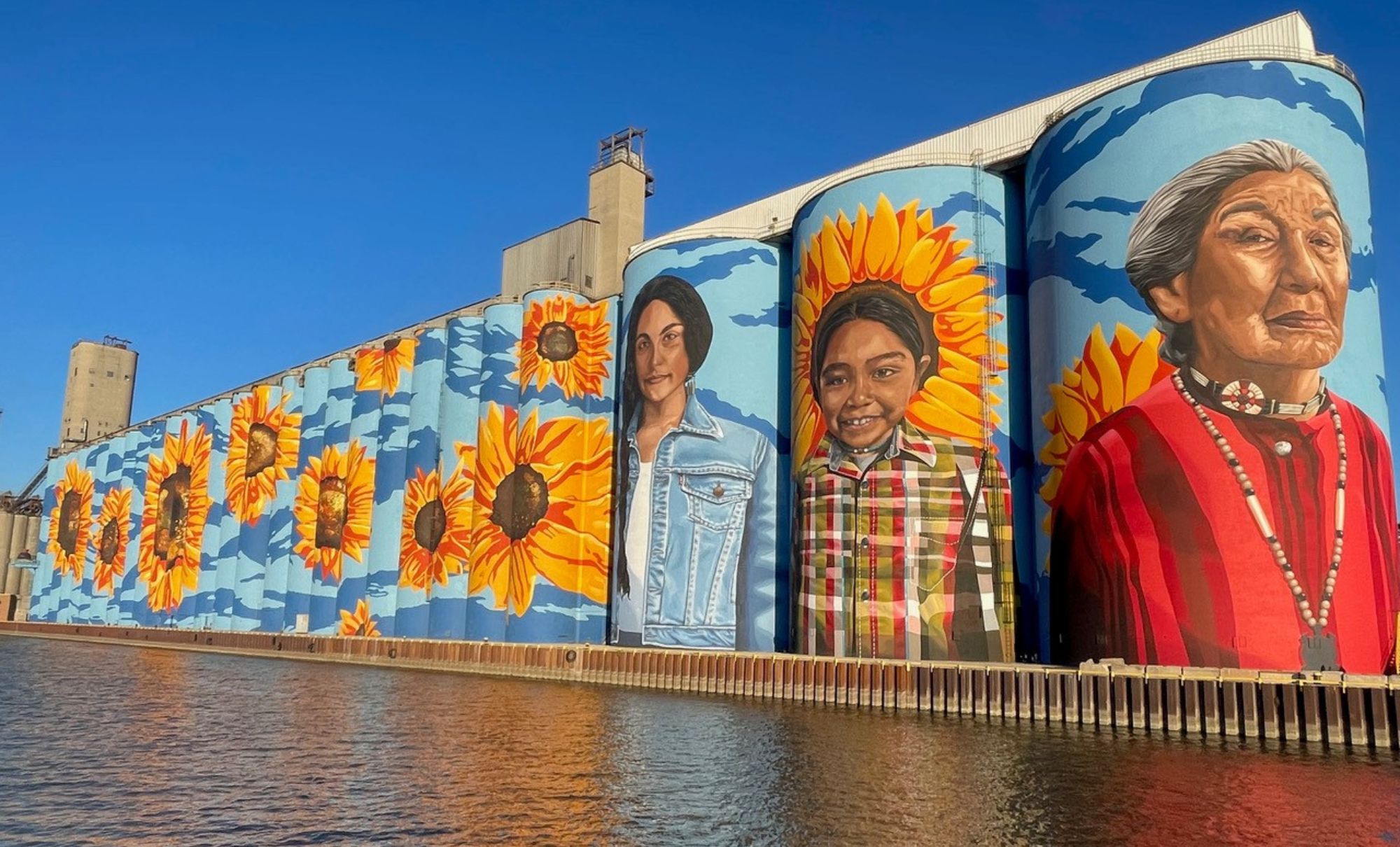
The mural is the brainchild of artist Gabe Gault, who was selected through an international Request for Qualifications process. Known for his portraits and backgrounds using camouflage patterns, Gault completed the project with the help of a crew of local artists and renowned muralist, Eric Henn. Gault’s design was chosen to showcase Toledo’s past, present and future and highlight the historical importance of agriculture and the first farmers as the foundation of the region’s economic development.
The models used for the portraits are from three different Tribes — the Miami Tribe of Oklahoma, the Shawnee Tribe and the Dakota Tribe. Living models were used to reinforce that Native Americans are people existing in vibrant communities of today.
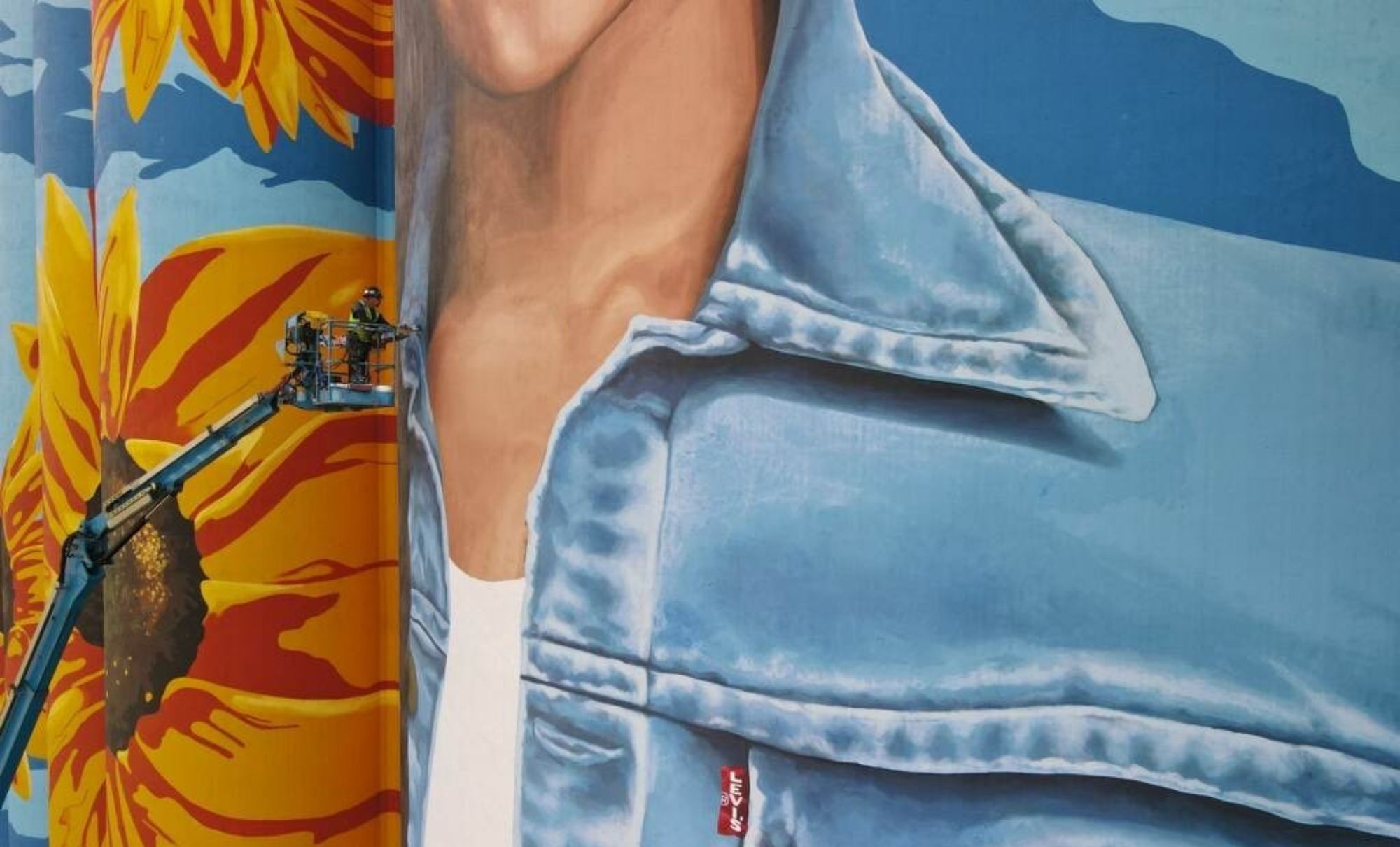
Kara Strass, Miami Tribe Relations Director at Miami University in Ohio, was the model for the mother wearing the Levi’s® jacket. Showing Kara in Levi’s®, a classic American brand, was a way Gault could depict how she symbolically blends into broader American society today — and not as a person of the past.
“One of the things that the Native American community said to us,” explained Christina Kasper, Glass City River Wall Project Manager, “is that ‘you view us as a people of the past and we live among you. We are part of your past, present and your future. We contribute to this day.’”
Glass City River Wall was officially completed and unveiled in October. A cultural celebration was held with the Dakota and Shawnee Tribes, including visits from the models used for two of the portraits: the “elder,” Mary Louise Defender Wilson, 92, and the “child,” Orontondi Greyhat. There were also Tribal blessings led by Gerald Ironshield, Citizen of the Dakota Tribe, and remarks from Lee Blue Jacket, Citizen of the Shawnee Tribe. There were also performances by traditional Bear, Buffalo and Eagle dancers.
The mural is just the latest in a long line of Levi’s® as art projects, starting in the 1970s Levi’s® Denim Art Contest to Andy Warhol’s painting of Levi’s® classic 501® jeans. More recently, Damien Hirst transformed Levi’s® garments with spin art that were showcased at the Gagosian Museum in 2007, and 501® jeans were featured in Items: Is Fashion Modern? — a 2017 exhibition at New York’s MoMA.
It stands to reason, however, that this mural will be the largest Levi’s® as art project, at least by scale, for some time.



